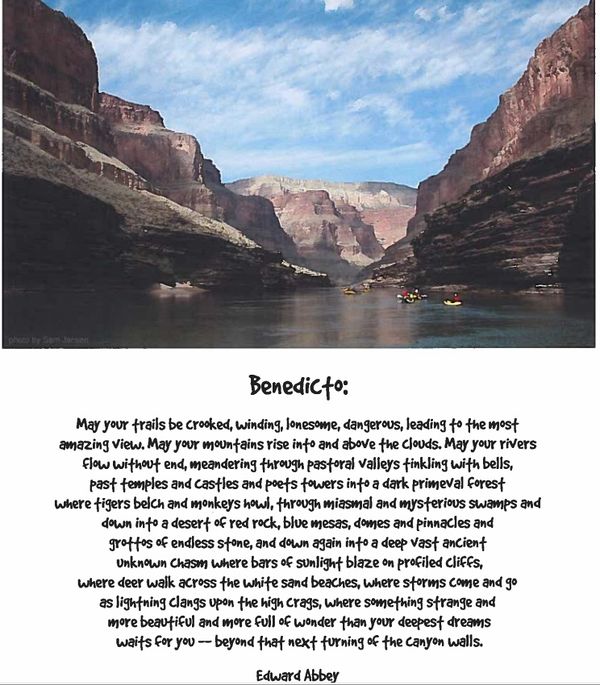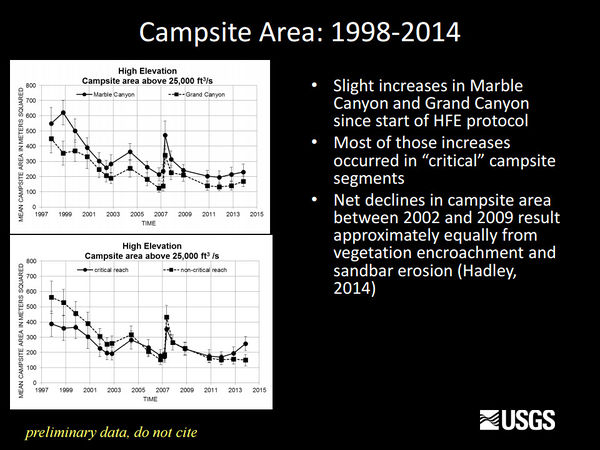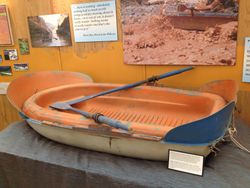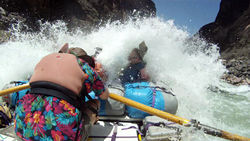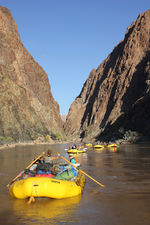Difference between revisions of "RECREATION"
Cellsworth (Talk | contribs) |
Cellsworth (Talk | contribs) |
||
| Line 93: | Line 93: | ||
'''2016''' | '''2016''' | ||
| − | *[[Media:20171219 GCPBA HFE comments.pdf| Grand Canyon Private Boater's Association (GCPBA) letter requesting | + | *[[Media:20171219 GCPBA HFE comments.pdf| Grand Canyon Private Boater's Association (GCPBA) letter requesting slower downramp rates following the Fall 2016 High flow experiment.]] |
*[[Media:GaylordTWG0416.pdf| Life Before AMWG]], by Gaylord Staveley, April 19, 2016 | *[[Media:GaylordTWG0416.pdf| Life Before AMWG]], by Gaylord Staveley, April 19, 2016 | ||
Revision as of 16:54, 31 March 2017
|
|
Colorado River RecreationSandbars have been used as campsites by river runners and hikers since the first expeditions to the region more than 100 years ago. Because the Colorado River is dominated by bedrock cliffs and steep talus slopes, sandbars provide unique areas along the river that are flat, relatively free of vegetation, easily accessible by river runners, and able to withstand high usage with negligible impact. These campsites continue to be an important part of the recreational experience for the more than 25,000 hikers and river runners that visit the Colorado River corridor each year. [1] Desired Future Condition for RecreationRiver Recreation in Grand Canyon National Park The Recreation DFCs are meant to describe goals and objectives for human use of the Colorado River Ecosystem (CRE) through GCNRA and the GCNP. They are intended to include not only traditional recreational activities such as whitewater rafting, camping, and fishing, but also such things as educational activities, spiritual engagement, and other appropriate activities and values. Grand Canyon and Glen Canyon offer many ways for people to experience, appreciate, and learn from them, even to those who never visit in person. |
| --- |
--- |
--- |
|---|
